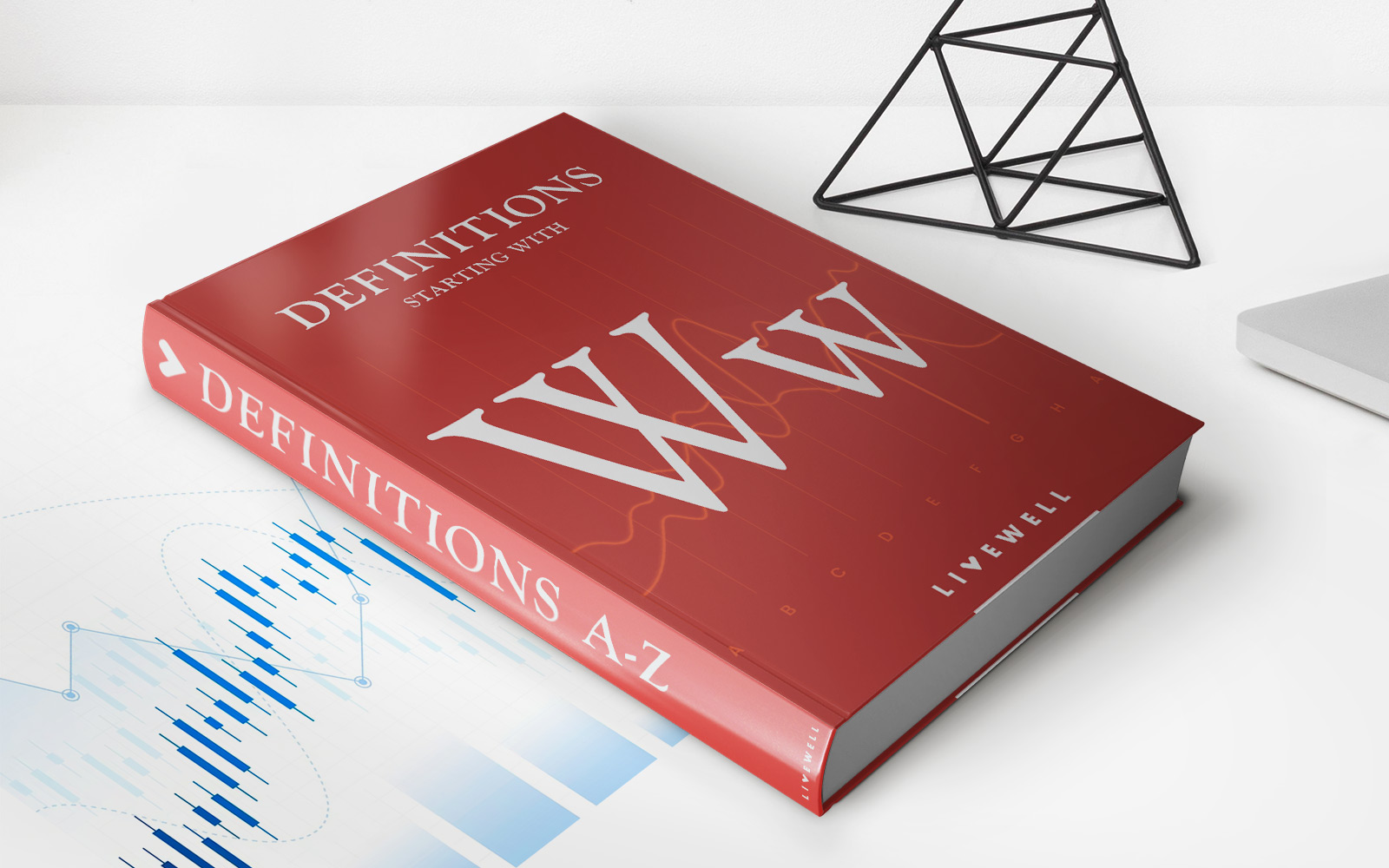Home>Finance>What Is The Waiting Period For Health Insurance?


Finance
What Is The Waiting Period For Health Insurance?
Published: October 29, 2023
Learn about the waiting period for health insurance and how it impacts your finances. Find out what you need to know before committing to a policy.
(Many of the links in this article redirect to a specific reviewed product. Your purchase of these products through affiliate links helps to generate commission for LiveWell, at no extra cost. Learn more)
Table of Contents
Introduction
Health insurance is an essential form of protection that helps individuals and families cover the cost of medical expenses. When enrolling in a health insurance plan, it’s important to understand the waiting periods associated with the coverage. Waiting periods refer to the length of time an individual must wait before certain benefits of the insurance plan become accessible.
Waiting periods are designed to prevent individuals from immediately using the insurance for pre-existing conditions or major medical treatments shortly after enrolling. They help balance the risk for insurers and ensure the sustainability of the insurance system for all policyholders. While waiting periods may seem frustrating, they serve a significant purpose in the overall structure of health insurance.
In this article, we will delve into the concept of waiting periods in health insurance, the different types of waiting periods, their durations, and any exceptions or exemptions that may apply. We will also explore the impact that waiting periods can have on the coverage provided by health insurance plans.
Understanding waiting periods is essential as it helps individuals make informed decisions when choosing health insurance plans and manage their healthcare costs effectively. Let’s explore the various aspects of waiting periods in health insurance in more detail.
Understanding Health Insurance Waiting Periods
A waiting period in health insurance refers to the length of time that an individual must wait before certain benefits of the insurance plan become accessible. During this waiting period, individuals are not eligible to receive coverage for specific medical services or pre-existing conditions.
The purpose of a waiting period is to prevent individuals from immediately enrolling in a health insurance plan and seeking expensive medical treatments or claiming benefits for pre-existing conditions. Waiting periods allow insurers to manage risk and ensure the sustainability of the insurance system by discouraging individuals from enrolling only when they need costly medical services.
It’s important to note that waiting periods vary depending on the health insurance plan and the specific services or conditions involved. Some waiting periods may be as short as a few days, while others can last several months or even a year.
During the waiting period, individuals must continue to pay their health insurance premiums, but they cannot access certain benefits until the waiting period has been completed. It’s crucial to carefully review the terms and conditions of a health insurance plan to understand the specific waiting periods associated with it.
Waiting periods apply primarily to new policyholders or individuals who have recently made changes to their health insurance plans, such as switching insurers or upgrading their coverage. These waiting periods ensure that people do not abuse the system and only enroll when they require immediate medical attention.
It’s essential to consider waiting periods when purchasing health insurance, especially if you have pre-existing conditions or anticipate the need for specific medical services in the near future. Understanding the waiting periods will help you manage your healthcare costs effectively and plan for any necessary treatments within the confines of your insurance coverage.
Types of Waiting Periods
There are two main types of waiting periods that you may encounter when it comes to health insurance coverage: waiting periods for pre-existing conditions and waiting periods for coverage to begin.
1. Waiting Periods for Pre-Existing Conditions:
One of the most common types of waiting periods is the waiting period for pre-existing conditions. A pre-existing condition refers to a health condition or ailment that exists prior to the start of a health insurance plan. The waiting period for pre-existing conditions is a specified time frame during which the insurer will not provide coverage for any medical expenses related to those conditions.
Pre-existing conditions can include chronic illnesses, such as diabetes or heart disease, as well as previous injuries or surgeries. The waiting period for pre-existing conditions can range from a few months to a year, depending on the health insurance plan.
2. Waiting Periods for Coverage to Begin:
Another type of waiting period is the waiting period for coverage to begin. This waiting period applies to all new policyholders or individuals who have made changes to their health insurance plans.
During this waiting period, individuals are not eligible for any coverage under the health insurance plan. It usually starts from the policy effective date or the date of enrollment and can last from a few days to a few weeks.
The purpose of this waiting period is to ensure that individuals cannot immediately access expensive medical treatments or claim benefits as soon as they enroll in a health insurance plan. It helps prevent adverse selection, where individuals enroll only when they need urgent medical attention.
It’s important to carefully review the terms and conditions of your health insurance plan to understand the specific waiting periods associated with it. This will allow you to plan and budget for any immediate medical needs you may have and ensure that you are adequately covered once the waiting period is over.
Waiting Periods for Pre-Existing Conditions
Waiting periods for pre-existing conditions are an important consideration when it comes to health insurance coverage. These waiting periods are designed to protect the financial stability of the insurance system by preventing individuals from enrolling in a health insurance plan solely to receive immediate coverage for existing health conditions.
A pre-existing condition is any health condition or ailment that an individual has prior to obtaining health insurance coverage. This can include chronic illnesses, such as diabetes, high blood pressure, or asthma, as well as previous injuries or surgeries.
When you enroll in a health insurance plan, there is typically a waiting period before coverage for pre-existing conditions begins. This waiting period can vary from a few months to a year, depending on the specific insurance plan and the regulations in your country or region.
During the waiting period for pre-existing conditions, the insurance company will not provide coverage for medical expenses related to those conditions. This means that any treatment, medication, or healthcare services you require for your pre-existing condition will have to be paid out of pocket until the waiting period is over.
It’s important to note that waiting periods for pre-existing conditions are not meant to be punitive. They help ensure the financial stability of the insurance system by spreading the risk among policyholders and preventing individuals from enrolling solely for immediate coverage of costly treatments or conditions.
Additionally, waiting periods for pre-existing conditions do not apply indefinitely. Once the waiting period is over, the insurance company will begin covering medical expenses related to your pre-existing condition. This coverage can include doctor’s visits, medications, surgeries, and other necessary treatments.
It’s crucial to carefully review the terms and conditions of your health insurance plan to understand the specific waiting period for pre-existing conditions. If you have a pre-existing condition, you may want to consider a health insurance plan that has a shorter waiting period or offers coverage for pre-existing conditions from the start.
By understanding the waiting period for pre-existing conditions, you can plan for any immediate medical needs, budget accordingly, and ensure that you have the necessary coverage once the waiting period is over.
Waiting Periods for Coverage to Begin
Waiting periods for coverage to begin are an essential aspect of health insurance plans. These waiting periods apply to all new policyholders or individuals who have made changes to their health insurance plans, such as switching insurers or upgrading their coverage.
When you enroll in a health insurance plan or make changes to an existing plan, there is a waiting period before your coverage becomes active. This waiting period ensures that individuals cannot immediately access expensive medical treatments or claim benefits as soon as they enroll in the plan.
The duration of the waiting period for coverage to begin can vary depending on the health insurance provider and the specific plan. It typically starts from the policy effective date or the date of enrollment and can last from a few days to a few weeks.
During this waiting period, you will not be eligible for any coverage under the health insurance plan. This means that you will need to pay for any medical expenses out of pocket until the waiting period is over and your coverage becomes active.
The purpose of this waiting period is to discourage adverse selection, which occurs when individuals enroll in a health insurance plan only when they require immediate medical attention. Waiting periods for coverage to begin help prevent this by ensuring that individuals cannot benefit immediately from the insurance plan without contributing over a significant period of time.
It’s important to carefully review the terms and conditions of your health insurance plan to understand the specific waiting period for coverage to begin. By being aware of this waiting period, you can plan for any immediate medical needs, explore other avenues of coverage if necessary, and ensure that you are adequately protected once your coverage becomes active.
Waiting periods for coverage to begin are a standard practice in health insurance and play a crucial role in maintaining the stability and sustainability of the insurance system. Understanding and adhering to these waiting periods is vital to ensure that you receive the full benefits of your health insurance coverage.
Duration of Waiting Periods
The duration of waiting periods in health insurance can vary depending on several factors, including the insurance provider, the specific plan, and the type of waiting period. Waiting periods can range from a few days to several months or even a year.
Waiting periods for pre-existing conditions typically have a longer duration. This is because they are meant to prevent individuals from enrolling in a health insurance plan solely for immediate coverage of pre-existing conditions. Waiting periods for pre-existing conditions can last anywhere from a few months to a year, depending on the insurance plan.
On the other hand, waiting periods for coverage to begin are generally shorter. These waiting periods apply to all new policyholders or individuals who have recently made changes to their health insurance plans. They are meant to ensure that individuals cannot immediately access expensive medical treatments or claim benefits as soon as they enroll or make changes to their plan. Waiting periods for coverage to begin can range from a few days to a few weeks.
It’s important to note that the duration of waiting periods can vary between different health insurance plans and providers. Some insurance plans may have shorter waiting periods, while others may have longer ones. It’s crucial to carefully review the terms and conditions of your health insurance plan to understand the specific waiting periods associated with it.
When considering health insurance coverage, it’s recommended to evaluate waiting periods along with other factors such as premiums, coverage limits, and network providers. Understanding the duration of waiting periods will allow you to plan accordingly and ensure that you have the necessary coverage once the waiting period is over.
Remember that waiting periods are designed to balance the risk for insurers and ensure the sustainability of the insurance system. While waiting periods may cause temporary inconvenience, they serve an important purpose in maintaining the affordability and viability of the health insurance market.
Exceptions and Exemptions to Waiting Periods
While waiting periods for health insurance coverage are a common practice, there are certain exceptions and exemptions that individuals should be aware of. These exceptions and exemptions exist to ensure that individuals with specific circumstances can receive coverage without having to fulfill the typical waiting period requirements.
1. Group Health Insurance Plans:
If you have employer-sponsored group health insurance coverage, you may be exempt from waiting periods. Group plans often have a provision that allows immediate coverage for new employees or individuals who are switching jobs within a specific timeframe.
2. Previous Coverage Credit:
Some health insurance plans may provide a credit for previous coverage that can be used to reduce or eliminate waiting periods. This credit is typically offered to individuals who had continuous health insurance coverage for a certain period of time before enrolling in a new plan.
3. Qualifying Life Events:
In certain circumstances, life events such as marriage, birth or adoption of a child, or loss of previous health insurance coverage may qualify you for an exemption from waiting periods. These events trigger a special enrollment period where you can enroll in a health insurance plan without having to wait for the usual waiting period.
4. State Regulations and Laws:
Some states have enacted regulations or laws that limit waiting periods or provide additional exemptions. These regulations may vary from state to state, so it’s important to familiarize yourself with the specific regulations in your jurisdiction.
It’s crucial to carefully review the terms and conditions of your health insurance plan to understand if any exceptions or exemptions apply to your waiting period. If you believe you may qualify for an exception or exemption, it’s recommended to contact the insurance provider directly to discuss your specific circumstances.
Understanding exceptions and exemptions to waiting periods allows individuals to navigate the health insurance landscape more effectively and ensures that those with unique circumstances can access coverage when needed. It’s important to stay informed and take advantage of any available options that may help expedite coverage without having to wait for the usual waiting period requirements.
Impact of Waiting Periods on Health Insurance Coverage
Waiting periods in health insurance can have a significant impact on the coverage individuals receive. While waiting periods are designed to prevent adverse selection and maintain the stability of the insurance system, they can pose challenges for individuals seeking immediate healthcare services or with pre-existing conditions.
1. Delayed Coverage:
The most obvious impact of a waiting period is the delay in accessing coverage for specific medical services or pre-existing conditions. During the waiting period, individuals must pay for any healthcare expenses out of pocket, which can be a financial burden, especially for those with ongoing medical needs.
2. Limited Treatment Options:
When individuals are subject to a waiting period, they may be limited in their options for seeking treatment. Without the coverage provided by health insurance, individuals may need to delay or forego necessary medical procedures or consultations with specialists, potentially compromising their health and well-being.
3. Increased Financial Responsibility:
During the waiting period, individuals are responsible for covering their healthcare expenses. Without the support of health insurance, these out-of-pocket costs can quickly add up, placing a strain on individuals’ budgets and potentially leading to financial hardship.
4. Limited Coverage for Pre-Existing Conditions:
For individuals with pre-existing conditions, waiting periods specifically targeting these conditions can result in limited coverage or even exclusion from receiving benefits related to their pre-existing conditions. This can further complicate their access to necessary medical care and potentially lead to higher healthcare costs in the long run.
It’s important for individuals to carefully consider their healthcare needs, including any pre-existing conditions, when selecting a health insurance plan. Understanding the waiting periods associated with different plans can help individuals make informed decisions and choose coverage that best aligns with their needs.
While waiting periods may present challenges, they are fundamental to maintaining the stability of the health insurance system and ensuring that coverage remains accessible and affordable for everyone. It’s important to remember that waiting periods are not permanent, and once the waiting period is over, individuals can access the full benefits of their health insurance coverage.
Exploring alternative options for immediate healthcare, such as clinics offering sliding-scale fees or government assistance programs, can help bridge the gap during waiting periods. Additionally, it’s advisable to discuss any concerns or specific healthcare needs with insurance providers to explore potential solutions or accommodations.
By understanding the impact of waiting periods, individuals can better prepare for the associated challenges and make informed decisions to manage their healthcare needs effectively.
Conclusion
Waiting periods in health insurance play a crucial role in maintaining the stability and sustainability of the insurance system. While they may seem like a inconvenience, they serve an important purpose in protecting insurers and managing the risk associated with enrolling in a health insurance plan.
Understanding the different types of waiting periods, such as those for pre-existing conditions and coverage to begin, is essential when navigating the world of health insurance. These waiting periods can vary in duration and have a significant impact on coverage, access to healthcare services, and financial responsibilities.
It’s important for individuals to carefully review the terms and conditions of their health insurance plans to understand the specific waiting periods that apply. This knowledge allows individuals to plan for any immediate medical needs, explore alternative options during waiting periods, and make informed decisions about the most suitable health insurance coverage.
While waiting periods can pose challenges, there are exceptions and exemptions that individuals should be aware of. These exceptions offer alternatives for those who may qualify based on their specific circumstances, such as group health insurance plans, previous coverage credits, qualifying life events, or state regulations.
When faced with a waiting period, it’s advisable to explore other potential avenues for healthcare or discuss concerns with insurance providers to find possible solutions or accommodations. Additionally, individuals can consider alternative options, such as clinics offering sliding-scale fees or government assistance programs, to bridge the gap during waiting periods.
In conclusion, waiting periods are a necessary component of health insurance that balance the risk for insurers and maintain the affordability and viability of the insurance system. By understanding waiting periods, individuals can navigate health insurance more effectively, manage their healthcare needs efficiently, and ensure they receive the coverage they need in a timely manner.
Ultimately, health insurance waiting periods are designed to protect both insurers and policyholders, providing a sustainable insurance system that allows individuals to access necessary medical care with financial security. By staying informed and understanding the impact of waiting periods, individuals can make informed decisions and utilize their health insurance coverage effectively.














